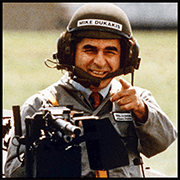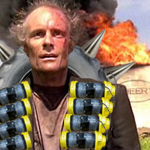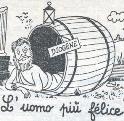|
Terrible derailment in Philly, a lot of people hurt, maybe killed. Live feed: http://www.nbcphiladelphia.com/news/local/Amtrak-Derailment-Philadelphia--303536331.html
|
|
|
|

|
| # ? May 11, 2024 12:45 |
|
Grave $avings posted:Terrible derailment in Philly, a lot of people hurt, maybe killed. 5 dead, 50'ish injured at this point it looks like.
|
|
|
|
Location of this crash: https://www.google.com/maps/place/4...0x0:0x0!6m1!1e1 Feet to the west is where the Congressional Limited, running the same DC to NY route, crashed in 1943, killing 79: https://www.google.com/maps/place/4...0x0:0x0!6m1!1e1
|
|
|
|
Cat Terrist posted:300mm in a day, rivers gaining meters of height in minutes..... I'm surprised any rail existed afterwards. That's actually really impressive then. Those railbeds and berms look surprisingly good given that much rain.
|
|
|
|
The Locator posted:5 dead, 50'ish injured at this point it looks like. It looks like the toll is up to 7 now. Newspaper reports: "PHILADELPHIA ó The Amtrak train that derailed in Philadelphia on Tuesday night, killing at least seven people, was barreling through a sharp turn at 100 miles an hour or more, at least twice the speed limit on that stretch of track, according to the National Transportation Safety Board. The trainís speed was recorded in the ďblack boxĒ data recorders that were recovered from the wreckage, according to officials with knowledge of the investigation, while emergency crews searched for more survivors and victims of a wreck that injured more than 200 people."
|
|
|
|
A couple days ago I finally saw this animation from the NTSB detailing the chain of events to the Chatsworth crash. https://www.youtube.com/watch?v=pg3jM58gdg8 I was given a briefing about how tragic events like Chatsworth result in legislation. Same with Lac-Mťgantic. There was additional talk about train caused fires and a major case involving them. I left there to go to Omaha and boarded my flight about 1930 MST, little did I know this wreck was happening. Today I spent all day in the famous Harriman "Bunker". It was an eye opener on many levels.
|
|
|
|
B4Ctom1 posted:
poo poo storm is the best description.
|
|
|
|
The people that work there on a shift to shift daily basis are pretty awesome, hilarious, crazy, and sometimes crotchety but pretty much always successful.
|
|
|
|
Maybe it wasn't his fault after all http://www.nytimes.com/2015/05/16/us/amtrak-train-may-have-been-struck-before-it-derailed-officials-say.html
|
|
|
|
Given the speed, I'm honestly amazed anybody survived that. I'd guess the only reason is because the sheer mass of the cars kept most of them from coming to the kind of quick stop you'd see in a 100 mph car accident? Weird foamer-like question - how does the emergency lighting on those work? I saw more than one photo where the exit signs and emergency lights were still working in a lopsided car, are they run off a battery in the car, or are they like a traditional emergency light in a building where each fixture has its own battery? The two times I've ridden Amtrak, I had an overnight layover, and noticed that while they were playing musical chairs with the cars, similar lights + exit signs worked for at least a few hours (I was asleep by the time they got it back together, and once I woke up the train was an hour away from the layover, so I never noticed). One such photo I'm talking about : 
|
|
|
|
Holy loving hell that first car got annihilated.
|
|
|
|
Some enterprising scamps have come up with a characteristically British way to replace the lovely old pacers: with slightly less lovely old obsolete London Underground trains! http://www.railtechnologymagazine.com/Inbox/why-not-do-some-re-engineering-adrian-shooter-on-the-vivarail-d-train Obviously after refurbishing the inside and replacing everything on the subframe with diesel bits because the wilds of the north still aren't electrified. And  
|
|
|
evil_bunnY posted:Holy loving hell that first car got annihilated. That's what happens when you slam into catenary poles at 100mph. Thankfully it was the first car, which was the business car and wasn't as full. I have been seeing a bunch of stuff about the Constitution Limited crash of '43 on the news lately because of this wreck, but I haven't seen one news organization talk about why that wreck was so deadly. The axle that broke due to a hotbox popped the car up so that the top of the car got taken off by the signal bridge at window level. I have a book on Pennsylvania train wrecks, and that wreck has always stuck with me as the most horrifying because of that.
|
|
|
|
|
jadebullet posted:That's what happens when you slam into catenary poles at 100mph. Thankfully it was the first car, which was the business car and wasn't as full. Eschede is scarier IMO, if you consider car 6 - the restaurant car, which was crushed by the bridge to a 6" thick sandwich of metal and
|
|
|
|
Train v. Bus last week in Atlanta https://www.youtube.com/watch?v=iaPbCZHxzck Six injured, no fatalities. One serious head injury, probably the last guy out the back doors who got a bus punted in to him. Considering it got hit by a train the bus actually fared pretty well: http://www.ajc.com/news/news/six-injured-in-marta-bus-vs-train-collision/nmGDs/
|
|
|
|
wolrah posted:Considering it got hit by a train the bus actually fared pretty well: http://www.ajc.com/news/news/six-injured-in-marta-bus-vs-train-collision/nmGDs/ Most likely because all the energy went into spinning the bus around, if it had been hit in the middle it would have most likely been flipped and torn in two.
|
|
|
|
Has someone made a drone that follows the rail road autonomously and scans for cracks/breaks and obstacles. If not ill take my million dollars in $2 bills please.
|
|
|
|
Preoptopus posted:Has someone made a drone that follows the rail road autonomously and scans for cracks/breaks and obstacles. If not ill take my million dollars in $2 bills please. Unless your name is Dipak, you're going to have to argue with this guy's prior art... https://www.youtube.com/watch?v=eMK8ZC6Ja-8
|
|
|
|
SybilVimes posted:Unless your name is Dipak, you're going to have to argue with this guy's prior art... What would you gain from one of these over the usual rail car track inspectors? It needs solar cells to stay powered if autonomous for one. And it'll need to be bigger with a giant antenna to communicate it's current location so operators can lock that section of rail till it passes. Or just amazingly cheap so when they get run over nothing is truly lost. Also, back to the amtrak crash, I was wanting to ask. It was mentioned the train put in a 10 degree tilt heading into that curve before it derailed. Would that tilt have helped minimize how few were injured considering the train was clocking 100mph before the derailment?
|
|
|
|
Preoptopus posted:Has someone made a drone that follows the rail road autonomously and scans for cracks/breaks and obstacles. If not ill take my million dollars in $2 bills please. When I was in college, I worked as a research assistant in a department which did railroad engineering research. One of the projects they were doing (which I was not assigned to) was a special camera mounted on a cart which would "read" track defects which would be automatically identified, in lieu of a human eye. Except they were never able to perfect a program which could read the video imagery and discern what the defect was, etc. So aside from them building a fancy cart out of rollerblade parts and someone probably writing a paper on the subject, the project never went anywhere.
|
|
|
|
bytebark posted:When I was in college, I worked as a research assistant in a department which did railroad engineering research. One of the projects they were doing (which I was not assigned to) was a special camera mounted on a cart which would "read" track defects which would be automatically identified, in lieu of a human eye. Except they were never able to perfect a program which could read the video imagery and discern what the defect was, etc. So aside from them building a fancy cart out of rollerblade parts and someone probably writing a paper on the subject, the project never went anywhere. They have been testing some equipment here that records vibrations and stuff and flags the location for manual inspection. It's not perfect but inspecting the rail while it's in production is certainly useful. e: It's called something like DAMIL but google is failing me. Klaus Kinski fucked around with this message at 08:36 on May 20, 2015 |
|
|
|
Klaus Kinski posted:They have been testing some equipment here that records vibrations and stuff and flags the location for manual inspection. It's not perfect but inspecting the rail while it's in production is certainly useful. The one they were working on where I went to school was strictly image-based. I think the intention was to automate the process of finding missing/broken spikes, bolts, and track clips. But they were never able to perfect the algorithm which would interpret the image itself, I'm guessing because there are too many variables when it comes to track structure. Rail projects in engineering academia seem to start off well enough, but the graduate students undertaking them quickly get frustrated with all the red tape that goes with working with a class-1 railroad (it's worse than government) and more often than not, will look for employment outside of the railway industry once they graduate. The ones that do stay with it either wind up on the consulting side or prematurely become middle-aged personas within their twentysomething bodies if they do go work for a railroad.
|
|
|
|
Mahmoud Ahmadinejad posted:Some enterprising scamps have come up with a characteristically British way to replace the lovely old pacers: with slightly less lovely old obsolete London Underground trains! http://www.railtechnologymagazine.com/Inbox/why-not-do-some-re-engineering-adrian-shooter-on-the-vivarail-d-train for some reason i thought that a specialist news site wouldn't be cursed with daily mail quality comments. but no: Lee 23/01/2015 at 13:16 In my view there is already a cost effective solution to bridge the gap of electrification, it's call the Pacer, we just need to be sensible and give them a derrogation on PRM compliance until the electrification programme is complete. Max speed 75mph, Aluminium bodied, 25T per vehicle, oh and they exist and are fully certified...
|
|
|
|
Cerv posted:for some reason i thought that a specialist news site wouldn't be cursed with daily mail quality comments. Isn't that the "rather ride a moose" train? Everything I learned about English locomotives, I learned from Axeman Jim in this thread.
|
|
|
|
IPCRESS posted:Isn't that the "rather ride a moose" train? As have I. All glory to
|
|
|
|
<- Yes, the Pacers are these things. All the fun of the bus with all the price of the train. That sounds a good idea. Replace draughty, uncomfortable, slow and unsafe trains from the 1980s with draughty, uncomfortable, slow and unsafe trains from the 1970s. I've spent quite long enough on the old LUL D Stock to develop a thorough loathing for it and I can't see it being much of an upgrade, even from the wretched Pacers. It wouldn't be the first time we've recycled trains though, particularly in the South of England. The old EPB commuter stock re-used underframes from older types dating from the 1920s. The effect on crashworthiness was...  ...not great. (That collision happened at 6mph and killed two people).
|
|
|
|
Thats a 6 mph crash? I have made joints way harder than that and never had a problem.
|
|
|
|
Axeman Jim posted:The old EPB commuter stock re-used underframes from older types dating from the 1920s. The effect on crashworthiness was... What is the difference in underframes? More stiffness? Greater tendency to under/override in the older ones? If you're inclined to write, I'd like to read about the evolution of crashworthiness improvements in trains.
|
|
|
|
joat mon posted:What is the difference in underframes? More stiffness? Greater tendency to under/override in the older ones? Have a read through Axeman Jim's posts in general, those trains are covered in one of them. They're a great read on just how hosed up British Rail has been over the past hundred-odd years.
|
|
|
|
smackfu posted:"Stuck" meaning the car is trapped between the two barrier gates. Haha oh man, first time I've read this (excellent btw) thread, I flip over to the other tab I have open which is my local paper's website, and see this: http://www.yorkpress.co.uk/news/12967959.Car_and_caravan_trapped_on_railway_line/ To be fair 99% of the people over here who own a caravan deserve to get hit by a loving train anyway.
|
|
|
|
Every time someone brings up a crossing crash it reminds me of that long description of what happens when a freight train is involved in one and I wish I could find it in the thread again. It's the one that ends with the driver drowning in blue water from the sewage tank and the whole accident blamed on a small amount of marijuana found on the conductor.
|
|
|
|
Neddy Seagoon posted:Every time someone brings up a crossing crash it reminds me of that long description of what happens when a freight train is involved in one and I wish I could find it in the thread again. It's the one that ends with the driver drowning in blue water from the sewage tank and the whole accident blamed on a small amount of marijuana found on the conductor. Here you go! B4Ctom1 posted:Pretty much this. It is hard to explain not just the physics, but the amounts of forces involved.
|
|
|
|
joat mon posted:What is the difference in underframes? More stiffness? Greater tendency to under/override in the older ones? The problem is under/overriding. In keeping with the design philosophies at the time, the EPBs had extremely heavy frames and very lightweight bodies, so in an accident one frame would leap up onto another, pulverising the passenger compartment - that's what you see happening in the Cannon Street crash photo. To prevent that, as well as abandoning the "bolt everything to a massive frame and then erect matchwood on the top" construction technique (though I note it's still the standard way to build freight diesels in North America), modern couplings feature "overrun preventors", grooves built into either the coupling or the buffers that interlock in the event of a collision, forcing the impact energy backwards rather than upwards.  You can see one in position on this 1996 tube train:  These units also have interlocking studs between their carriages though I couldn't find a good picture of that. Another horrific tendency of early coaching designs was "telescoping", where in an impact one carriage would force its way into another, much like a telescope. If you were unlucky enough to be in either carriage at the time, you would be turned to mush:   Ouch. Modern construction methods have reduced this, with most passenger cars nowadays being of stressed one-piece monocoque construction, with no welds or bolts to serve as an entry point for the energy. Passenger cars are now designed to push sideways rather than upwards or straight on in the event of a crash. Like this one:  This was the Colwich Junction crash in 1986, a head-on collision between two express trains at a closing speed of over 150mph, caused by a driver mis-interpreting a signal. Only the driver of one of the trains was killed, and all the passengers survived, which is a tribute to the strength of the (then) new Mark III carriages that were designed for the HST project but employed almost everywhere in the UK in one form or another. The one car that has taken serious damage (centre-right) is a baggage car of an older 1950s design. Carriages these days are even safer.
|
|
|
|
BrokenKnucklez posted:poo poo storm is the best description. I mentioned going to the bunker on Facebook and one of my fellow engineers posted this 
|
|
|
|
Axeman Jim posted:<- Yes, the Pacers are these things. All the fun of the bus with all the price of the train. The main problem the D stock always had is the single leaf doors, classic 1970s underfunded public utility thinking: "oh ridership is going down, we can cut down on maintenance if you have half as many doors" without imagining the possibility that service use would go up. They're much nicer since the 2008ish refurbishment, though they got rid of the grippy wooden floors and replaced it with plastic-rubber (easier to clean) that bubbles up when it gets loose from the base it's stuck to. Before: so very, very brown and orange  After: oh how spacious and airy  Also here's a picture of your interlocking things from when they used to take trains apart on the regular, pinched off this bit of nerdery http://www.trainweb.org/districtdave/html/coupling___uncoupling.html 
|
|
|
|
Recent commentary on state of (intermodal) rail. http://www.joc.com/rail-intermodal/class-i-railroads/how-will-rails-react-soft-volume_20150520.html quote:According to the writer Jimmy Breslin, immortal baseball manager Casey Stengel is reputed to have uttered, ďCanít anybody around here play this game,Ē in response to the ineptitude of his team, the New York Mets, during their first year of existence in 1962. Although the problem perhaps isnít of the same magnitude, Iím tempted lately to say the same thing when I review weekly rail and intermodal service statistics. http://www.joc.com/rail-intermodal/intermodal-shipping/intermodal-shippers-growing-hunger_20150525.html quote:Although some of us may have read Charles Dickensí ďOliver Twist,Ē most of us are more familiar with the movie ďOliver!Ē Who can forget the title characterís plaintive plea, ďPlease sir, I want some more.Ē In the novel, Oliverís request was determined by starving boys at the workhouse, who drew straws. Nobody wants to be the one to ask, but todayís intermodal customers seem on the verge of a similar entreaty: They are looking for more capacity, more service and more (better) pricing.
|
|
|
|
|
Mahmoud Ahmadinejad posted:The main problem the D stock always had is the single leaf doors, classic 1970s underfunded public utility thinking: "oh ridership is going down, we can cut down on maintenance if you have half as many doors" without imagining the possibility that service use would go up. They're much nicer since the 2008ish refurbishment, though they got rid of the grippy wooden floors and replaced it with plastic-rubber (easier to clean) that bubbles up when it gets loose from the base it's stuck to. Anyone who doesn't have the build of a marathon runner must utterly despise those new seats. Metro, the current operators in Melbourne, just hacked out the single disabled seats on either side of the doors in the middle carriages and added more overhead railings to hold onto. Everyone's much happier with them because there's a shitload more space for the 5pm weeknight sardine ride.
|
|
|
|
Here in the Bay Area, Caltrain is trying to figure out how to operate together with high speed rail on a mix of current legacy 25in high platforms and future standard 50in platforms. This involves a clusterfuck of design constraints such as ADA requirements, ability to reuse existing designs, ridiculous door layouts, the need to accommodate bikes, etc. This information is then fed to community participants, who are as a rule nutty and irrational. http://www.caltrain.com/Assets/Caltrain+Modernization+Program/Meetings/Agenda+Packet+05.28.2015.pdf
|
|
|
|
Did it take a bunch of people dying to convince railroads that a one person crew is a bad idea? http://www.bloomberg.com/news/articles/2015-05-27/amtrak-crash-seen-as-quashing-idea-of-one-person-freight-crews
|
|
|
|

|
| # ? May 11, 2024 12:45 |
|
ijustam posted:Did it take a bunch of people dying to convince railroads that x is a bad idea?
|
|
|






































